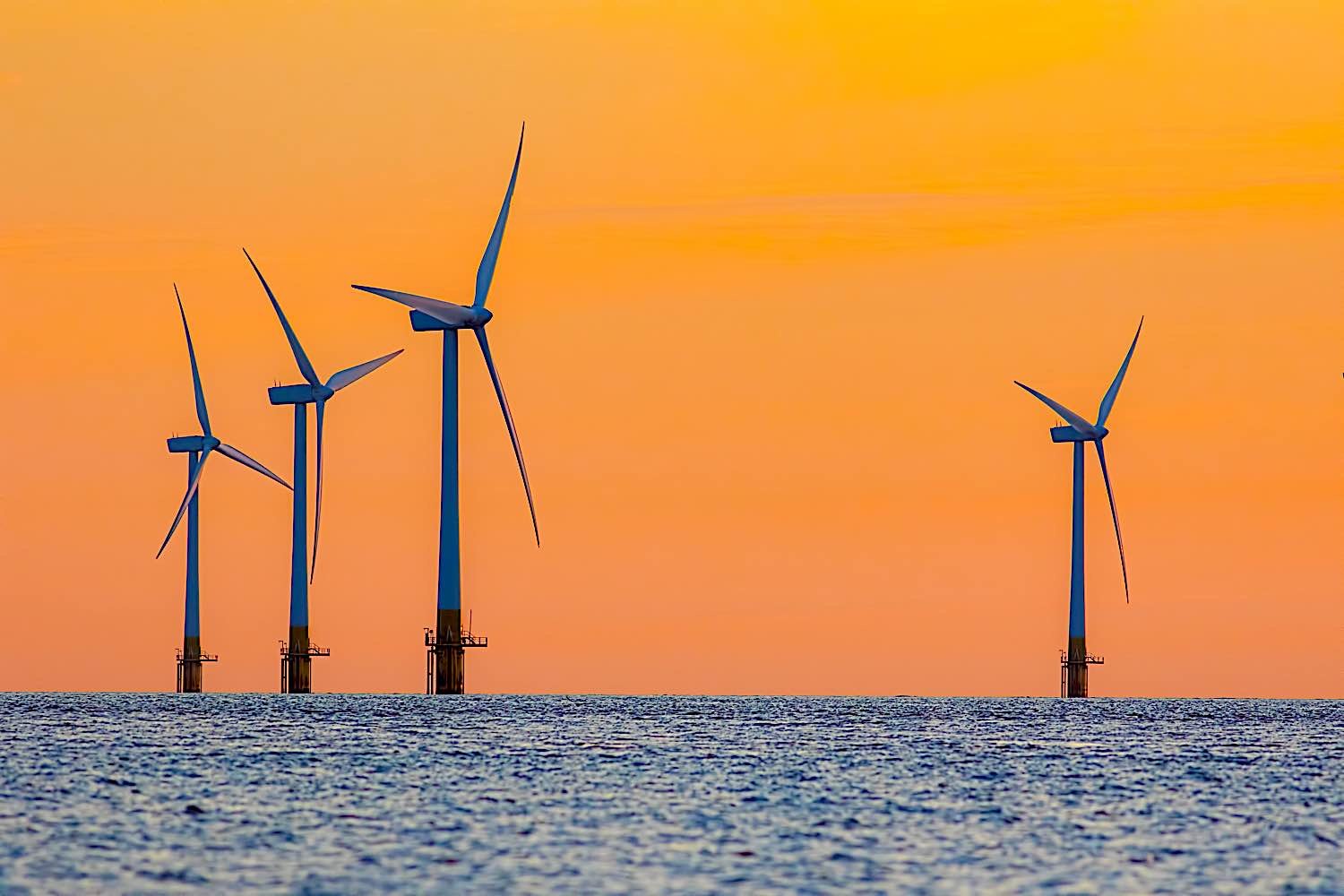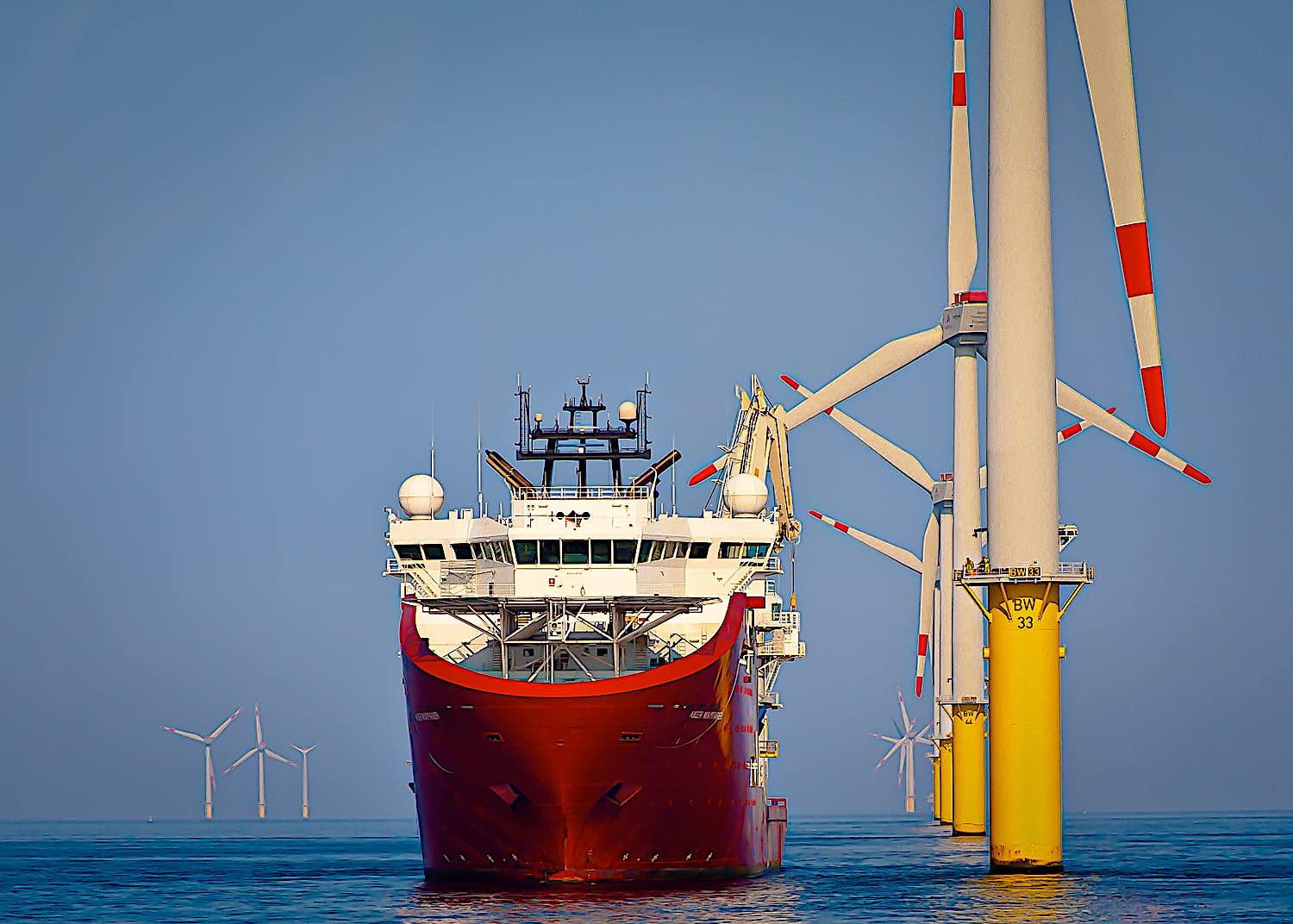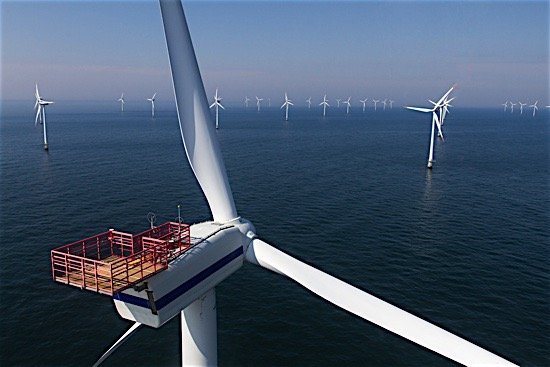Most people already know that offshore wind power is significantly better for the environment compared to oil and gas. However, a new study from the Center for American Progress [1] has determined that offshore wind is also upwards of 125 times better for American taxpayers compared to traditional oil and gas energy production.
The reason for this is largely because of the way that energy sector land leasing and residual value contracts are structured for oil and gas operations. “Americans are getting [a better] return on investment from offshore wind energy lease sales than they are from oil and gas lease sales,” says Michael Freeman, the author of the report.

The analysis shows that from 2019-2021, the average winning bid per acre for an oil and gas operation lease had a net value of only $49. This is in stark contrast to the average value per acre of offshore wind, which had a median bid of over $5900. According to Jenny Rowland-Shea, the Director of Public Lands for the Center for American Progress, “This number is likely to increase [..] as the American wind industry is still in its infancy” [2].
The bottom line here is that offshore wind simply costs American taxpayers much less over the course of the leasing term than an oil or gas drilling operation of comparable scale. One reason for the large disparity in value has to do with the length of the average lease across various mediums in the energy sector. Another factor is the residual value of oil and gas leases.
Offshore Wind Projects Have Better Lease Terms Compared with Oil and Gas Operations
Offshore wind is an increasingly popular source of renewable energy. In fact, the U.S. now has more than 5,000 megawatts of capacity from offshore wind farms [3]. One reason why offshore wind is a good investment for taxpayers is that these projects don’t require the same type of lease that most oil and gas operations demand.
When it comes to any business, taxpayers want to see their money go as far as possible. This means negotiating leases with the lowest possible residual value and shortest lease term that we can get away with at that site.
Oil and gas companies often take advantage of a state’s willingness to make leasing deals sweetened with incentives like royalty reductions or bonus points toward renewal in exchange for long-term leases with high residual values [4]. The perpetual nature of these leases often leads to taxpayers paying the energy companies more when the price of oil is low.

Basically, the government ends up paying the companies more because they are guaranteed a certain price for their product as well as some amount of profit no matter what is happening in the rest of the energy sector. Meanwhile, the taxpayer still has to pay the same amount for gasoline and other energy products even if the government is shelling out a lot more.
Long-term leases have been a standard practice in the oil and gas industry for decades. The way these leases are structured, though, means that the taxpayers are often giving up a lot of money. Oil and gas companies often negotiate long-term leases that could last for as long as 99 years.
While these leases provide security for the companies, they can also be a big deal for the taxpayers. They could end up paying billions of dollars to energy companies even if the wells run dry long before the lease expires.

Offshore wind doesn’t involve any long-term leasing, at least not compared to traditional oil and gas projects. This means that there is less of a tax obligation for the average American taxpayer over the length of the lease, which in turn yields a higher value-per-acre for off-shore wind compared with oil and gas.
Residual Value is Another Key Benchmark Haunting Taxpayers with Oil and Gas Projects
Another factor that makes offshore wind’s lease structure so much better for taxpayers than the leases for oil and gas is the residual value. Residual values are basically the minimum amount that the company that owns the lease will get for their property when the lease expires [5]. This is usually done to account for any extra equipment that might be left behind as well as the costs of cleanup.
For example, let’s say that a company owns the lease on a piece of land. They have the right to use the land as they see fit. But they also have the obligation to clean up the land when they are done using it. If they leave some piece of equipment that they did not want or do not need, they will need to ensure that it is cleaned up. They will also want to make sure that they are compensated for the equipment.
The issue is that the person who owns the lease on the land may or may not have the resources to clean up this equipment. They may not even know that it’s there. So, the person who owns the lease will make sure that there is some amount of money left over to clean up this equipment. In other words, the residual value is what is used to pay for the cleanup of equipment and the restoration of the land.
Offshore wind doesn’t involve this sort of residual value as there is no land involved in the operation. This means that the average cost of the lease is significantly lower than traditional energy sector land leases. The end result is that offshore wind leases put less strain on the government compared with oil and gas leases, which results in higher value, and less tax burden for American taxpayers.
Offshore Wind Power is Still in its Infancy but is Promising for the Environment and Taxpayers
The vast majority of the American energy supply still comes from large-scale oil and gas operations. This is unlikely to change in the immediate future, but investments in renewable energy are poised to change this in the years ahead. In 2021, the Biden administration announced a new goal to produce 30 Gigawatts of power from offshore wind by 2030 [6]. That’s enough energy to power 10 million American homes.
More recently, in August of 2022, the Biden administration signed the Inflation Reduction Act. One segment of this legislation effectively connects offshore wind leasing with oil and gas leasing. This means that as new oil and gas leases are granted, new offshore wind leases must be granted as well [7]. Not only is this good news for the environment, but it will also make a tangible difference for taxpayers in the coming decades.
The Social Cost of Carbon Emissions is High with Oil and Gas but Negligible with Wind Power
Of course, wind power production has many benefits beyond just the tax implications. Most notably, wind power is objectively better for the environment than oil and gas energy production. As of 2022, offshore oil and gas operations produce 87 metric tons of carbon dioxide emissions per active acre. That’s about the same amount of carbon pollution generated by 19 cars driving non-stop for one year [8]. And again, that’s per acre.
The social cost of offsetting those carbon emissions is around $16,000 per acre for oil, and $2600 for natural gas production [9]. This is another fee being absorbed largely by American taxpayers. On the other hand, the social cost of offsetting carbon emissions from offshore wind power production is “essential nil”. Again, this is according to Michael Freeman who authored the recent analysis for the Center for American progress.
All things considered, green power sources still account for a minute fraction of the American energy supply, but as investments increase, and new incentives are rolled out, it’s highly likely that renewable energy will eventually account for a significant percentage of America’s gross energy production in the ’30s and beyond. Not only will this be more sustainable for the environment, but it will mean more money in the pockets of American taxpayers.
Sources:
[1] Offshore Wind Can Lower Energy Prices and Beat Out Oil and Gas – Center for American Progress
[2] Compared to oil and gas, offshore wind is 125 times better for taxpayers | Salon.com
[3] How Much Wind Energy Is Used In The US? 2022 Data (missionnewenergy.com)
[4] Understanding an Oil and Gas Lease (pagaslease.com)
[5] Residual Value Definition (investopedia.com)
[7] Inflation Reduction Act of 2022 – Wikipedia
[8] Greenhouse Gas Equivalencies Calculator | US EPA
[9] The most influential calculation in US climate policy is way off, study finds | Grist





























